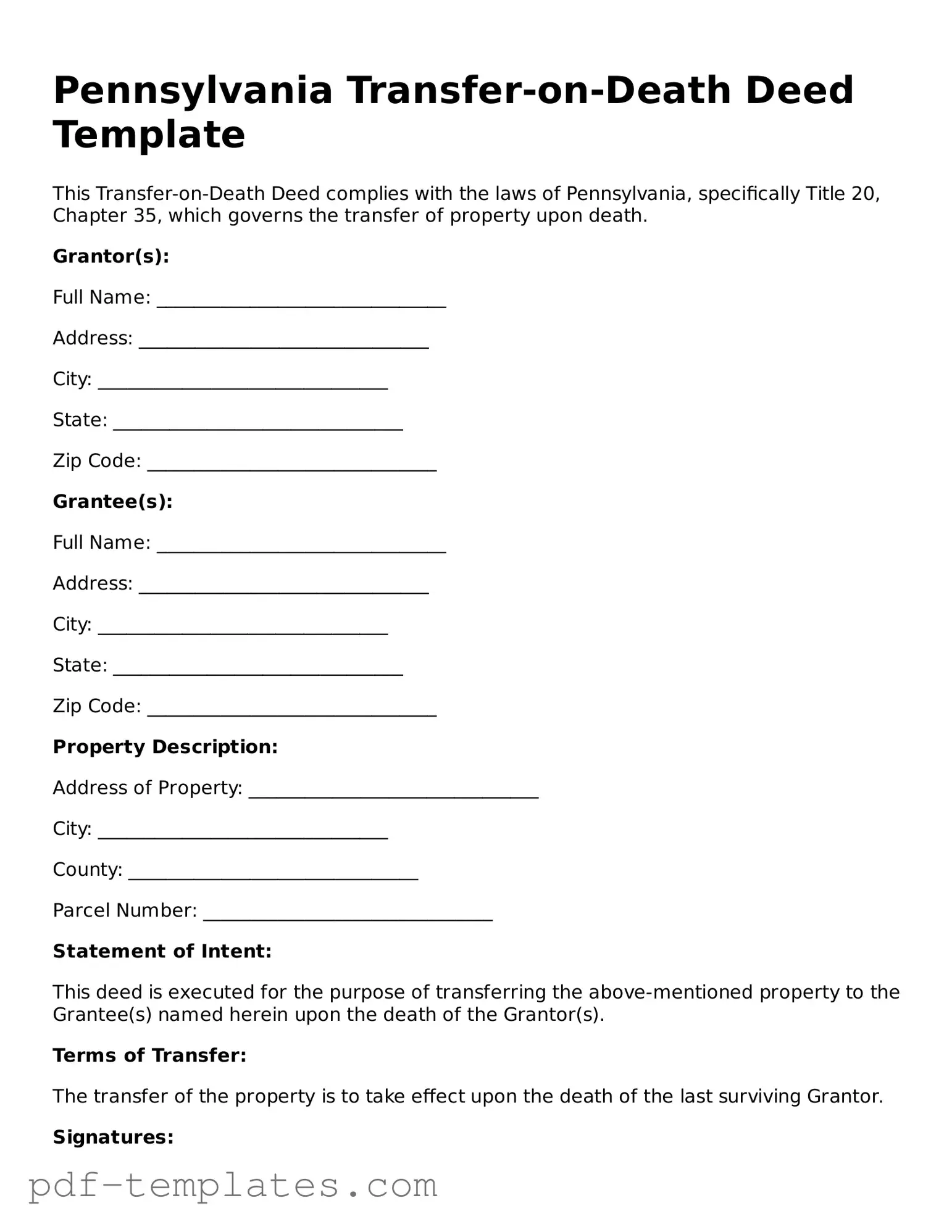Official Transfer-on-Death Deed Template for Pennsylvania State
A Pennsylvania Transfer-on-Death Deed form allows property owners to designate a beneficiary who will receive their real estate upon their death, bypassing the probate process. This straightforward tool can simplify the transfer of property and provide peace of mind for both the owner and their loved ones. To get started on securing your property for future generations, fill out the form by clicking the button below.
Customize Form Now
